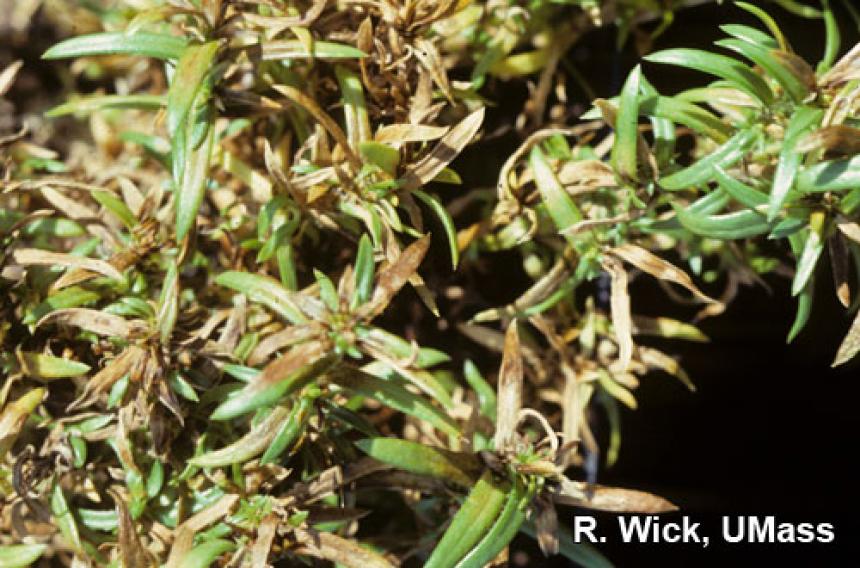The stem and bulb nematode, Ditylenchus dipsaci is a well known pest of Allium species, flower bulb crops (Narcissus, Hyacinth, and tulips), flowering shrubs (Hydrangea) and rhizomatous plants such as Iris and Gladiolus species. D. dipsaci is an obligate parasite of plants. Many populations of the nematode exhibit marked host preferences. The nematode is common in all temperate regions and is easily spread by infected bulbs, rhizomes, or infected plant material. Symptoms of the nematode feeding on leaf tissue include twisting and malformation of leaves, blisters, and swellings. Lesions caused by nematodes can become colonized by fungi and bacteria leading to complete decay. In later stages of the disease, the nematodes aggregate into a mass (nematode wool) and with slow drying can persist in a dehydrated state for many years. The nematodes’ long term survival potential and wide host range enables persistence in infested fields for long periods of time. Chemical, physical, and cultural methods of control have been used to restrict damage, but most chemical treatments are no longer registered for use. Hot water treatment of bulbs can be effective but must be done accurately and with careful monitoring to avoid heat damage. Starting with certified disease-free planting material and prompt removal and destruction of infested plants can limit nematode damage.
Center for Agriculture, Food, and the Environment
Center for Agriculture, Food, and the Environment
Stockbridge Hall,
80 Campus Center Way
University of Massachusetts Amherst
Amherst, MA 01003-9246
Phone: (413) 545-4800
Fax: (413) 545-6555 ag@cns.umass.edu
Civil Rights and Non-Discrimination Information
CAFE Units
Mass. Agricultural Experiment Station
UMass Research and Education Center Farms
Water Resources Research Center

